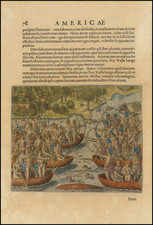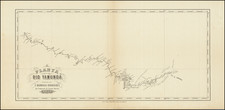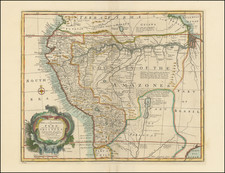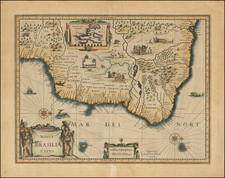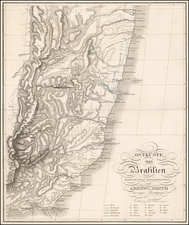Bird's-eye view of the Dutch capture of the fort at Porto Calvo in 1637, from Merian's Theatrum Europaeum.
This bird's-eye view illustrates the Dutch capture of the fort at Porto Calvo in February and March of 1637. The region was a major area of conflict between the Portuguese and the Dutch in their battle to control the sugar industry in Brazil. Porto Calvo changed hands several times between 1635 and March of 1645.
The conquest of Olinda by Loncq in 1630, later of other sections of the Brazilian coast, with the fortified Recife and Pernambuco as the chief points, proved to be very costly for the Dutch, both in terms of money and resource, especially under the management of Colonel Christoff Artischowsky, a Pole in the service of the States and the real founder of the Dutch possessions in Brazil.
Count John Maurice of Nassau, one of John of Nassau's many grandsons, was appointed head of the new colony in 1637 for five years. He went out with a small force of nearly 3000 men and 12 ships and began to strengthen the Dutch hold on the region. Unfortunately, over time, disagreements between Maurice and Artischowsky and the Dutch West India Company's poor support for Maurice resulted in his departure from the region and its retaking by the Portugese in 1645.
Mathaus Merian (1593-1650) was the father of engraver Matthäus the Younger, and of the painter, engraver, and naturalist Maria Sibylla Merian. He was born in Basel, Switzerland and trained in engraving in Zurich. After a time in Nancy, Paris and Strasbourg, he settled in Frankfurt. While there, he worked for Johann Theodor de Bry, the publisher and son of the travel writer. In 1617, he married Maria Magdalena de Bry, Johann Theodor’s daughter. In 1623, Merian took over the de Bry publishing house upon the death of his father-in-law. Merian’s best known works are detailed town views which, due to their accuracy and artistry, form a valuable record of European urban life in the first half of the sixteenth century









